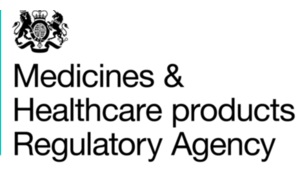-
17th Jul 2017, 12:59 PM
#1
 Full Group/Short Group
Full Group/Short Group
Dear All.
We are about to built and validate new LIMS , currently we do full Group on First sample and Short group on second and subsequent samples, Do we need to perform Full Blood Group on a second and subsequent samples ? is it MHRA requirement? do we have a clear guidelines for this?.
Please reply to my thread.
Kind regards.
Nelson.
-
17th Jul 2017, 11:18 PM
#2
Dear Nelson,
For virtually everything transfusion related there is usually a BSH guideline or standard available that will help you with these decisions. See below for an extract, though you will need to check through the full version as well. These guidelines are partly what the MHRA also inspect against- so if you try to adhere to these you can't really go wrong.
www.b-s-h.org.uk/guidelines/
Guidelines for pre-transfusion compatibility procedures in blood transfusion laboratories(2012)
Section4
4.3. Test selection
4.3.1.ABO grouping
- A full ABO group comprises a forward group and a reverse group; the forward group should be performed using monoclonal anti-A and anti-B blood grouping reagents, and the reverse group using A1 and B reagent red cells.
- A full group must be performed on all samples from first time patients, with the exception of neonates, where the reverse group is unlikely to be helpful, as any ABO antibodies are likely to be maternal in origin.
- Consideration can be given to omitting the reverse group on subsequent samples, where secure, fully interfaced automation is used and a risk assessment has been undertaken to ensure that the forward group is not compromised. The risk assessment should include the possibility that the first sample may have been taken from the wrong patient, an event estimated to occur at a rate of 1:2000 samples (Dzik et al., 2003; Murphy et al., 2004).
KEY RECOMMENDATION: Any abbreviation of the ABO group must be fully risk assessed.
- The following should apply before consideration is given to omitting the reverse group:
- There should be no manual intervention or manual editing of results;
- The current cell group must be identical with the historical record;
- There must be at least one valid historical record where testing included a reverse group. The historical group should have been performed in a fully automated system, in control of the LIMS or analyser, with no manual edits; however, further aspects of validity should be locally defined, with consideration given to where and when the group was performed and recorded.
- The risks involved with omitting the reverse group decrease with the number of matching historical records. Where there is only one historical record, the first sample could have been taken from the wrong patient, and a grouping anomaly in the subsequent sample could be overlooked without a reverse group, e.g. mixed field reactions (potentially indicating an ABO incompatible transfusion) are sometimes not detected or are misinterpreted.
As you are also making changes to your LIMS, I suggest you also refer to the IT specific guidelines on the BSH site.
Hope this is of some help.
Kind regards,
-
6th Jul 2021, 11:19 AM
#3
Thank you for the guidelines, Rashmi.
We are testing our new biobanking platform and need to make sure everything is ok with the electronic transfer of results. I'll start a new topic and explain the details, once we validate new LIMS.
OpenSpecimen Emory University lab cooperation to write my research paper
 Posting Permissions
Posting Permissions
- You may not post new threads
- You may not post replies
- You may not post attachments
- You may not edit your posts
-
Forum Rules



 Reply With Quote
Reply With Quote